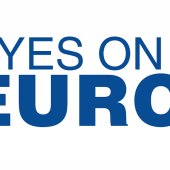It’s not only the Eurozone crisis that has been unsettling the EU for quite some time. With the Schengen Area, another EU core project has been in nearly permanent crisis for several years. This development started with the Franco-Italian spat over North African migrants fleeing the upheaval of the Arab Spring in 2011 and became particularly visible in summer 2015 when extraordinarily high numbers of refugees arrived in Europe over the Mediterranean Sea and the Western Balkans.
Eurozone and Schengen crises: same same, but different
At first sight, the crises of the Eurozone and that of the Schengen area bear similarities. Both fundamentally challenged the EU and were triggered by external shocks: the American banking crisis in 2008 and the high influx of migrants, especially in 2015. They brought out major deficiencies of the Economic and Monetary Union and the Schengen regime, respectively. In both cases, this led to conflicts over the question of solidarity and burden sharing among the EU member states and fueled the politicisation of the issues at stake.
Nevertheless, the outcomes of the two crises could not be more different. The Eurozone crisis, on the one hand, set in motion a deepening of the financial integration through reforms and the creation of new institutional frameworks such as the European Stability Mechanism and the initiation of a Banking Union. The refugee crisis, on the other hand, did not serve as a trigger for an urgently needed reform of the common border and asylum systems. We observe, on the contrary, an increasing disintegration of the Schengen Area since the outbreak of the crisis.
No pulling on the same string in the refugee crisis
All attempts to collectively handle the refugee crisis failed spectacularly. For example, the very modest plan of a quota system that would have redistributed asylum seekers more equally among European states was introduced in September 2015 against the fierce opposition of some member states and experienced an embarrassingly low implementation rate. Rather than seeking compromise to reform the Dublin system, whose country-of-first-entry rule determines which member state is responsible for treating an asylum application and puts Southern European states disproportionately under pressure, European leaders can only agree on externalising the problem. With measures like the EU-Turkey-Agreement and migration partnerships with African countries such as Niger, the EU has focused increasingly on preventing migrants from reaching the external borders of the Schengen Area in the first place.
In addition, national logics of dealing with the issue seem to be ever more prevailing. This became evident when member states reverted to unilateral measures at the height of the crisis, individually deciding to leave their borders open or to reinstate internal border controls. The latter was initially conceived as a temporary and extraordinary measure but became quasi-permanent and has been de facto suspending the Schengen acquis for three years. Recent trends of criminalising non-governmental sea rescue and closing ports to vessels that carry saved migrants also illustrate the unwillingness of European states to work towards a reform of the border and asylum regimes in order to ensure a proper functioning of the Schengen Area.
Schengen breakdown, the lesser evil?
The question remains why member states were willing to take, though painful or domestically controversial, collective decisions for reform during the financial crisis while the reform process of the Common European Asylum System has been stalling for years despite the urgency of the situation.
One explanation is that the danger during the financial crisis, namely a collapse of the Eurozone, was perceived as threatening enough to make these concessions, even against Eurosceptic voices. A Eurozone breakdown and a Greek bankruptcy would have damaged everyone, while in the migration issue the status quo seems easily acceptable for most member states. There is no such agreement amongst European states on a common bad to be prevented in the context of the Schengen crisis. This has also to do with the fact that, in the financial crisis, the threat was located inside the EU, while it is easy to ignore a problem supposedly off Europe’s shores. Additionally, politicians seem to be too afraid of anti-immigrant sentiments among the population to overcome differences in member states’ preferences on common border and migration management.
This, however, might be a misleading and potentially fatal interpretation of the situation. The real cost of a possible breakdown of the Schengen Area is rarely pointed out by decision- and opinion-makers. Free movement, one of the core concepts of European integration, has not only an ideational, but also a very concrete financial value for European citizens and enterprises, and politicians should not be too casual about this.
Not to mention the moral price of persistently breaching human rights commitments – a question of not only ethics, but also of international law. And, finally, even though Eurosceptic and xenophobic voices often seem louder, politicians should not forget that majorities in most member states still support the EU and cling to its achievements and human rights standards. These citizens should be mobilised in order to keep one of the EU’s core endeavours alive.



Follow the comments: |
|
